Understanding the meaning of Depth of Discharge (DoD) will help you prolong battery life. DoD is expressed as a percentage and represents how much of the battery's actual power can be used out of its total power. On the other hand, SoC (or State of Charge) determines the current level of energy that remains in the battery. Cycle life indicates the total number of times a battery can be recharged or discharged before its performance is degraded.
If you're looking for a high-qualitfy battery that can charge most indoor or outdoor appliances, you'll need a large-capacity solar-powered generator. Jackery Solar Generators feature highly efficient LiFePO4 or NMC batteries with long life cycles. They can charge up to 99% of appliances during power outages or blackouts. They are portable, so you can carry them to outdoor locations while camping, hiking, etc.
Key Takeaways
- Depth of Discharge (DoD) represents the percentage of the battery that is discharged relative to the overall battery capacity.
- The SoC (State of Charge) determines the battery's current energy level, which indicates whether it is empty or full at any given time.
- Cycle life refers to the number of times any battery can be discharged and recharged before reaching the end of its useful life.
- Storing the battery in mild temperatures can help you extend its lifespan and performance.
- DoD can be calculated by dividing the discharged energy by the initial capacity and multiplying the result by 100.
Depth of Discharge Meaning
Depth of Discharge (DoD) measures the percentage of the battery capacity that has been depleted. Higher DoD values indicate more energy has been consumed. Think of DoD as a fuel gauge for the battery that informs you about how much power is depleted and how much is left in the tank.

All batteries have a self-discharge rate, which means there will be some power loss over time, even if they are not in use. Flooded lead-acid batteries generally have the highest self-discharge rates, around 10-15% per month, whereas lithium batteries have the lowest, 1-3% per month.
DoD is crucial as it affects the battery's lifespan, efficiency, and performance. If you manage DoD, you can extend the battery life and optimize its performance. Frequent discharging below the DoD levels can lead to more helpful recharge cycles compared to regularly draining to the maximum DoD.
Depth of Discharge vs Capacity
Depth of Discharge and capacity are varied aspects of a battery's performance. Understanding the differences will help you know the remaining energy level of the battery and how much more can be used before it needs to be recharged.
Battery capacity is the total amount of energy any battery can store when it's 100% charged. It's like the tank size that determines how much fuel it can hold. However, you cannot usually use all the stored energy without damaging the battery. That's where Depth of Discharge (DoD) comes into the picture.
DoD represents how much energy can be safely used from the battery without compromising its lifespan. It tells you how empty or full the battery is after being used. While capacity is the maximum energy the battery can hold, DoD varies with time and represents how much power the total capacity has been used.
Depth of Discharge vs State of Charge
Depth of Discharge (DoD) and State of Charge (SoC) are different methods for determining the battery's energy level. They are opposite of each other, and as one increases, the other decreases. Think of these values like a glass of water. While the DoD tells the amount of water that has been consumed from the glass, the SoC represents the current water level remaining in the glass.

DoD determines how much energy is used or discharged from the battery. It indicates how empty or full the battery is after it is used. On the other hand, SoC represents the current energy level remaining in the battery, which indicates how empty or full the battery is at a given moment.
Both DoD and SoC values are essential to understand the battery's energy status. Depth of Discharge carefully represents how much energy is used over time, whereas SoC provides a quick glance at the battery's current energy level. These values will help you effectively manage the battery's usage and recharge it whenever needed.
Depth of Discharge vs Cycle Life
Depth of Discharge and cycle life are two things that affect the performance and lifespan of a battery. DoD represents how much energy has been used from the battery each time you discharge it. In other words, DoD indicates the battery percentage that has been discharged relative to its overall capacity.
On the contrary, cycle life measures the number of times any battery can be discharged and recharged before reaching the end of its life. The higher the Depth of Discharge and the more often the battery is discharged, the shorter its cycle life will be. For example, a battery might have a cycle life of 15,000 cycles at a DoD of 10% but only 3000 cycles at a DoD of 80%.
Depth of Discharge for Different Batteries
DoD (Depth of Discharge) is an essential factor that you would need to keep in mind when choosing the battery for your application. Different batteries will have their own safe zone for how much you can safely drain before recharging. It will help you maximize the lifespan and performance of the battery. Here, we will reveal the variations in DoD between flooded lead acid, AGM, lithium, NiCd, and NiMH batteries:
Flooded Lead Acid (FLA) Battery
Flooded lead-acid batteries have a Depth of Discharge of around 50% to 80%. To maintain optimum lifespan and performance, you should avoid discharging lead-acid batteries below 50% of their total capacity. When you discharge the battery below the threshold, it can lead to accelerated degradation and a reduction in the total number of charge/discharge cycles. These batteries are generally found in trucks, cars, RVs, and boats.
AGM Battery
Similar to flooded lead-acid batteries, AGM (Absorbent Glass Mat) batteries offer a DoD range of around 50%—80%. For this reason, lead-acid and AGM batteries share the same considerations regarding avoiding deep discharges for prolonged battery life. Such high-performance batteries are usually found in cars. They are also used as dual-purpose batteries in RVs and boats.
|
AGM Battery State of Charge |
|
|
Level |
Voltage |
|
100% |
13.00+ |
|
90% |
12.75 |
|
80% |
12.50 |
|
70% |
12.30 |
|
60% |
12.15 |
|
50% |
12.05 |
|
40% |
11.95 |
|
30% |
11.81 |
|
20% |
11.66 |
|
10% |
11.51 |
|
0% |
10.50 |
Lithium Battery
Lithium batteries, including lithium-ion and lithium iron phosphate, offer impressive DoD ranges from 80% to 95%. However, you should not discharge the battery fully, as this can damage the cells within it. Compared to AGM or flooded lead-acid batteries, lithium-ion batteries can be safely discharged to a low level without compromising their performance or lifespan.
Jackery Portable Power Stations feature NMC or LiFePO4 batteries that can charge most household or outdoor appliances. They have a long lifespan, meaning they can be used for years. For example, the Jackery Explorer 2000 Plus Portable Power Station features a LiFePO4 battery and has a cycle life of 4000, after which it drops to 80% of its capacity.
|
Lithium Battery State of Charge |
|
|
Level |
Voltage |
|
100% |
13.60 |
|
90% |
13.40 |
|
80% |
13.30 |
|
70% |
13.20 |
|
60% |
13.10 |
|
50% |
13.05 |
|
40% |
13.00 |
|
30% |
12.90 |
|
20% |
12.80 |
|
10% |
12.00 |
|
0% |
11.00 |
NiCd and NiMH Battery
Nickel-based batteries, such as Nickel Metal Hydride (NiMH) and Nickel Cadmium (NiCd), are resilient to deep discharges and can handle DoDs of up to 80% without any consequences. In fact, NiCd batteries can completely discharge, and NiMH batteries can be deep cycled from 80% to 100% DoD.
Jackery Solar Generators Explained
Jackery is a reputable solar brand that manufactures high-quality and highly efficient solar generators, battery power stations, and foldable solar panels. The Jackery Solar Generator combines Jackery Portable Power Stations and Jackery SolarSaga Solar Panels, which work in tandem to charge household or outdoor appliances using free solar energy.
When the solar panels are placed under direct sunlight, the monocrystalline silicon solar cells convert the solar energy into DC electricity. The electricity is then passed to the pure sine wave inverter of the portable power station to complete the DC to AC conversion process. The Jackery Solar Generators feature LiFePO4 batteries that have a long cycle life and work well in different weather conditions.
Jackery Solar Generator 300 Plus
The Jackery Solar Generator 300 Plus is a portable and compact solar-powered generator designed for outdoor needs, such as camping, hiking, fishing, and other outdoor adventures. It has a long cycle life of around 3000 cycles, after which the capacity drops to 80%. It has a foldable handle and ergonomic design to move the portable solar generator to outdoor locations. It weighs only 11 lbs and is easy to set up in a remote location for quick charging of the appliances.
Appliances Running Time
- Laptop (80W) = 3.0H
- Smart Speaker (10W) = 24.4H
- Camera (9W) = 27.2H
- Portable Fan (50W) = 4.8H
- Drone (90W) = 2.7H
- Lights (10W) = 24.4H
- TV (150W) = 1.6H

Customer Review
"Super easy to carry — I bought the 40w solar panel with it & love how easy & small it is as well. The 300 is very portable. I mostly purchased it for backup in case of emergency & to run a car cooler when I travel. I've already used it for the car cooler & it worked like a dream. Perfect for all your travels!" — H.B.
Jackery Solar Generator 2000 Plus
If you want a solar-powered generator that works well for short- and long-term power outages, you will need a large Jackery Solar Generator 2000 Plus. It also features a highly efficient LiFePO4 battery with a lifespan of 4000 cycles, after which the battery capacity drops to 70%. The solar battery backup can be connected to the utility grid using the Jackery Manual Transfer Switch, which ensures quick charging of the appliances during an unexpected power outage. It also features double wheels and a foldable handle to move the solar generator anywhere you go and start charging.
Appliances Running Time
- Air Conditioner (1100W) = 1.5H
- Microwave (1000W) = 1.7H
- Kettle (850W) = 2.0H
- TV (150W) = 11.5H
- Light (10W) = 173.6H
- Induction Cooktop (1100W) = 1.5H
- Refrigerator (400W) = 4.3H

Customer Review
"Easy to set up and use, thoughtful design to have a battery mounted on wheels. Since this is a modular system, we will be adding more components in the future." — Denise Shepherd.
How to Calculate Depth of Discharge
Calculating the Depth of Discharge (DoD) is simple. All you need to do is know the initial battery capacity and the amount of energy discharged from the battery. Here's the mathematical formula to calculate the DoD of a battery:
DoD = (Discharged Energy ÷ Initial Capacity) × 100%
Where,
DoD is the Depth of Discharge
Discharged Energy represents the amount of energy discharged from the battery.
Initial Capacity means the total battery capacity.
Here are the steps you need to follow to calculate the DoD:
Step 1: Determine the initial capacity of the battery, which is usually expressed in amp-hours or watt-hours.
Step 2: Next, you need to measure the amount of energy discharged from the battery. This is also expressed in Ah or Wh.
Step 3: Calculate the DoD by dividing the discharged energy by the initial capacity. Then, multiply the result by 100 to get the DoD percentage.
Let's say the battery has a capacity of 100Ah, which is discharged by 70Ah. The DoD would be calculated using the below formula:
DoD = (70Ah ÷ 100Ah) × 100% = 70%
Depth of Discharge Meaning FAQs
What size solar generator do I need?
The right size of solar generator needed will directly depend on the total wattage consumption of the appliances you want to charge and the number of their operating hours.
Let's say you want to charge essential appliances such as a refrigerator (400W), lights (10W), and a portable fan (50W) during a short power outage. If you are charging these appliances with the help of Jackery Explorer 2000 Plus Portable Power Station, the operating hours will be equal to:
Running Time = Battery Capacity in Wh × 0.85 ÷ Operating Wattage of the Appliances = 2042.8Wh × 0.85 ÷ 460W = 3.7H
Note: We have multiplied the battery capacity to account for the power loss happening when charging the appliances.
Is the depth of discharge higher the better?
No, higher DoD values do not necessarily mean a better battery. In fact, you should avoid high DoD values for most batteries. A higher DoD means more energy will drain from the battery before you need to recharge it.
Is it okay to fully discharge a lithium battery?
You should avoid fully discharging a lithium battery as it can potentially cause the individual cells to discharge at different states. Prolonged discharging to low levels can lead to permanent damage to the battery.
What does 80% Depth of Discharge mean?
80% Depth of Discharge means 80% of the battery's total electricity storage capacity has been used, and only 20% is left. For instance, if the battery has a capacity of 100Ah, you can use up to 80Ah before needing to recharge it.
What is the best depth of discharge for a battery?
Batteries with a DoD limited to 10-70% degrade slower compared to batteries with a DoD of 0-100%. The capacity retention capability remains great at 60°C (140°F) in the DoD range of 10-70%.
Final Thoughts
Depth of Discharge means how much energy is cycled in and out of the battery on any given cycle. It is represented as a percentage of the total battery capacity. For example, if the battery has been depleted by 40%, it means the DoD value is 40%, and 60% of its battery remains.
DoD is like checking the car's gas tank to see how much fuel is used and how much remains. Jackery Solar Generators are powerful charging solutions that can charge most indoor or outdoor appliances, such as refrigerators, TVs, lights, etc. They feature LiFePO4 or NMC batteries to provide uninterrupted power to the appliances for charging.

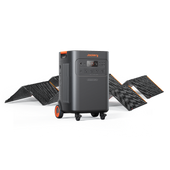











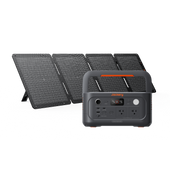



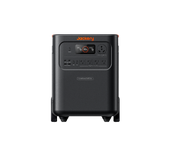
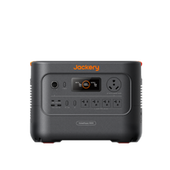





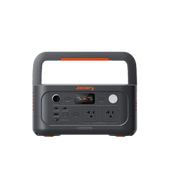





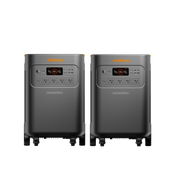
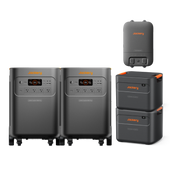





![[Add - on] Jackery Manual Transfer Switch for Explorer 5000 Plus - Jackery](http://www.jackery.com/cdn/shop/files/add-on-jackery-manual-transfer-switch-for-explorer-5000-plus-9017324.png?v=1754016782&width=170)
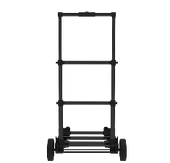
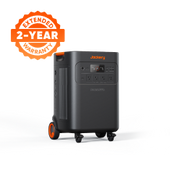
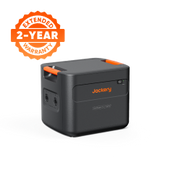
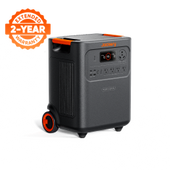
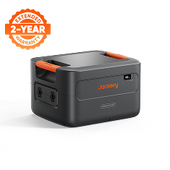
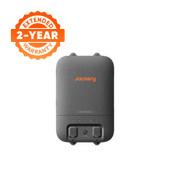



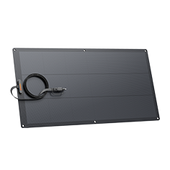
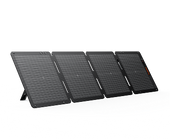




















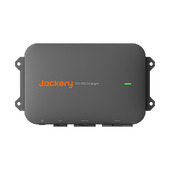




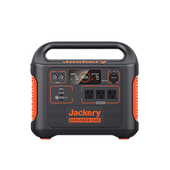






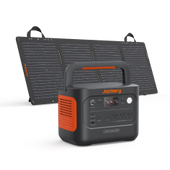
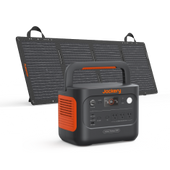






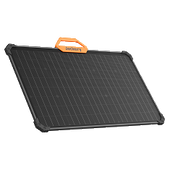

















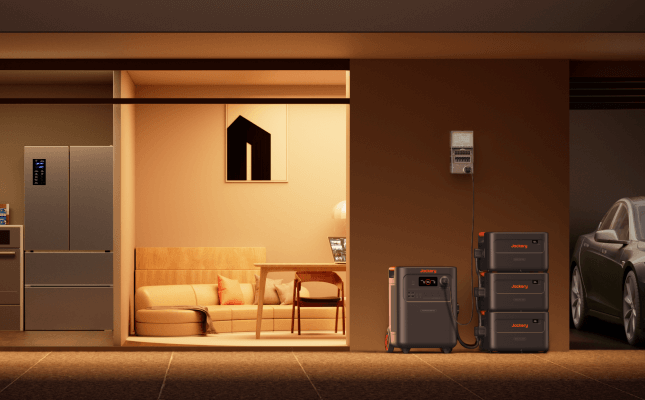


























Leave a comment